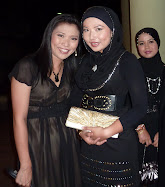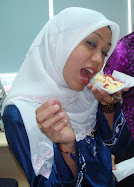
It is monsoon season now on peninsular Malaysia's east coast. Perfect weather to sit in the house and type up summaries of some of the interesting academic studies that have been published in regards to Malay culture. The rain has been coming down now for three days straight and my cat refuses to go outside and "do her thing" in the garden. With some prodding, she will make a quick dash to a spot under the Gardenia bushes, and then quickly race back into the house, wet.
(Photo: Jalapeno pepper plants drowning under monsoonal rain.)
Fishermen of South Thailand: The Malay Villagers, Thomas Fraser, Jr. (1966). This now out-of-print book is part of the Case Studies in Cultural Anthropology series published by Holt, Rinehart and Winston, back in the 1960s. I picked up a very used copy at Powell's Bookstore in Portland, Oregon, one of the world's largest bricks-and-mortar bookstores with nearly one million titles under their roof. Fraser went and lived in the Malay fishing village of Rusembilan, Pattani district of south Thailand. It is a very indepth look at the economics, social structure, and lifestyle of Malay villagers, and includes an entire chapter dealing with the supernatural, i.e., how the villagers dealt with spirits and illnesses.
Women & Culture: Between Malay Adat and Islam, Wazir Jahan Karim (1992). A Malay anthropologist, Ms. Wazir produced one of the more interesting books concerning adat (Malay customs) and its intersection with Islamic practice. From the back cover: "...the author argues persuasively that an imported Islamic orientation toward gender is working at cross-purposes in Malaysia with the indigenous value system adat." Out of all the books that I have read regarding Islam as practiced in Malaysia, this one makes more sense to me in that it shows the dynamic that is truly at work in the culture. I doubt that too many men have read this or would agree with its thesis.
The Malay Magician, Richard Winstedt (1951). Part of the Oxford in Asia paperback series, this book is Mr. Winstedt's view of the development and role of the Malay bomoh (shaman, witch-doctor) in Malay culture. Winstedt was another one of those prolific British diplomat/scientists who made such valuable contributions in their study of the subjects which they oversaw.
The Heat of the Hearth: The Process of Kinship in a Malay Fishing Community, Janet Carsten (1997). Another Oxford Studies book, Dr. Carsten lived in a Malay kampung on Langkawi Island during the 1980-82 period and focused upon family (kinship) relations both within the house and outside of the house. It goes into greater depth regarding the family than did the Fraser study, but paired, these two studies give a good overview of Malay fishing communities.






No comments:
Post a Comment